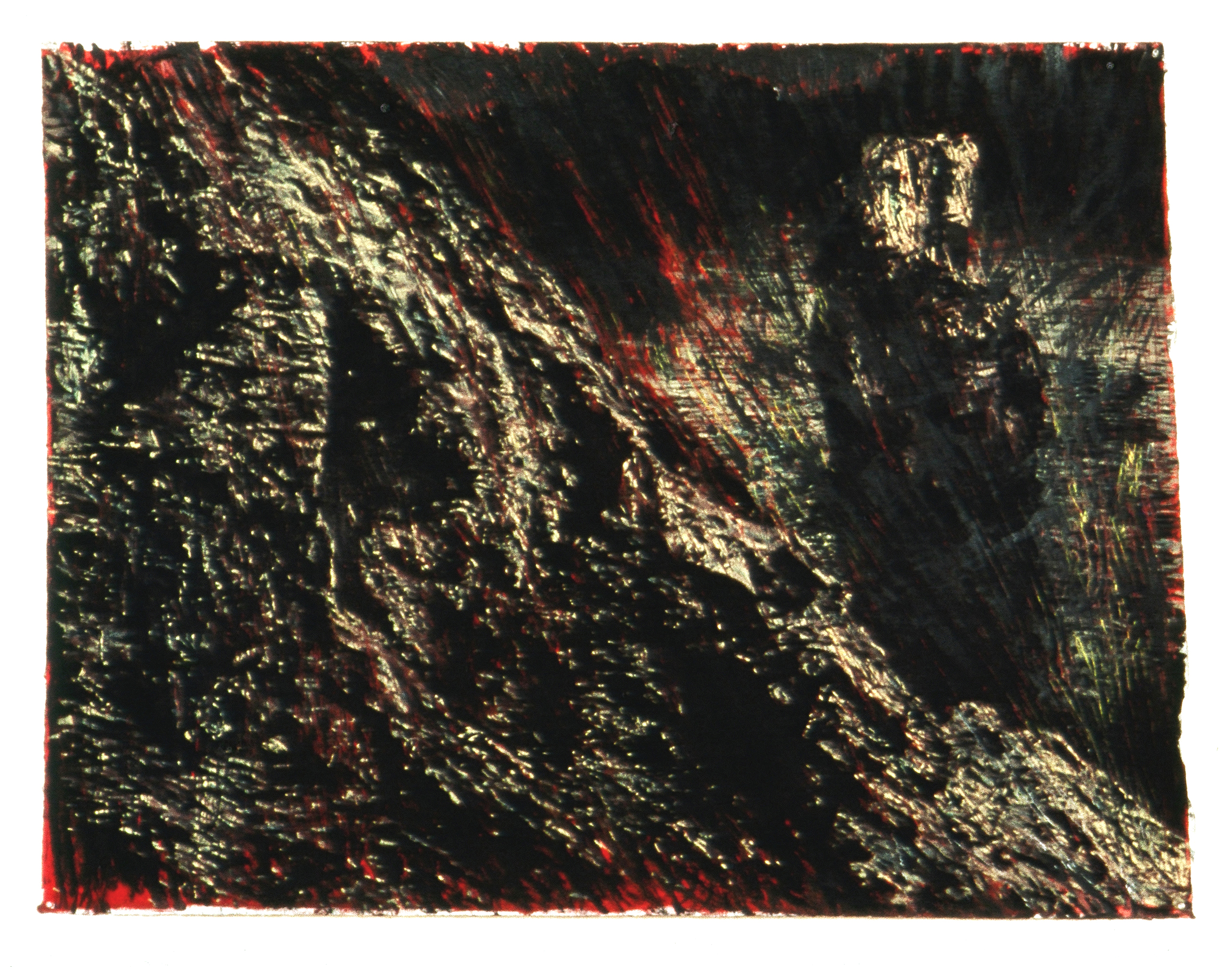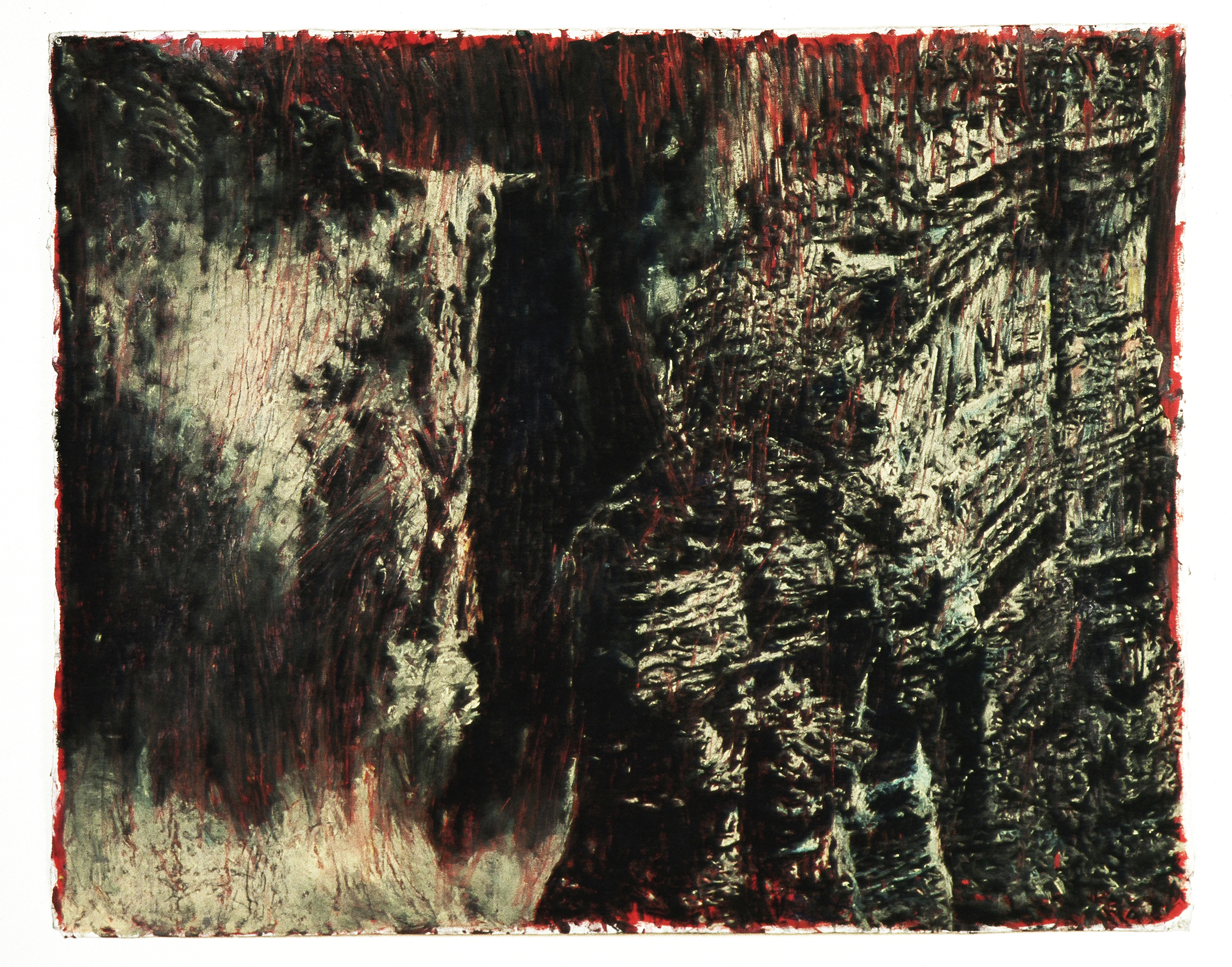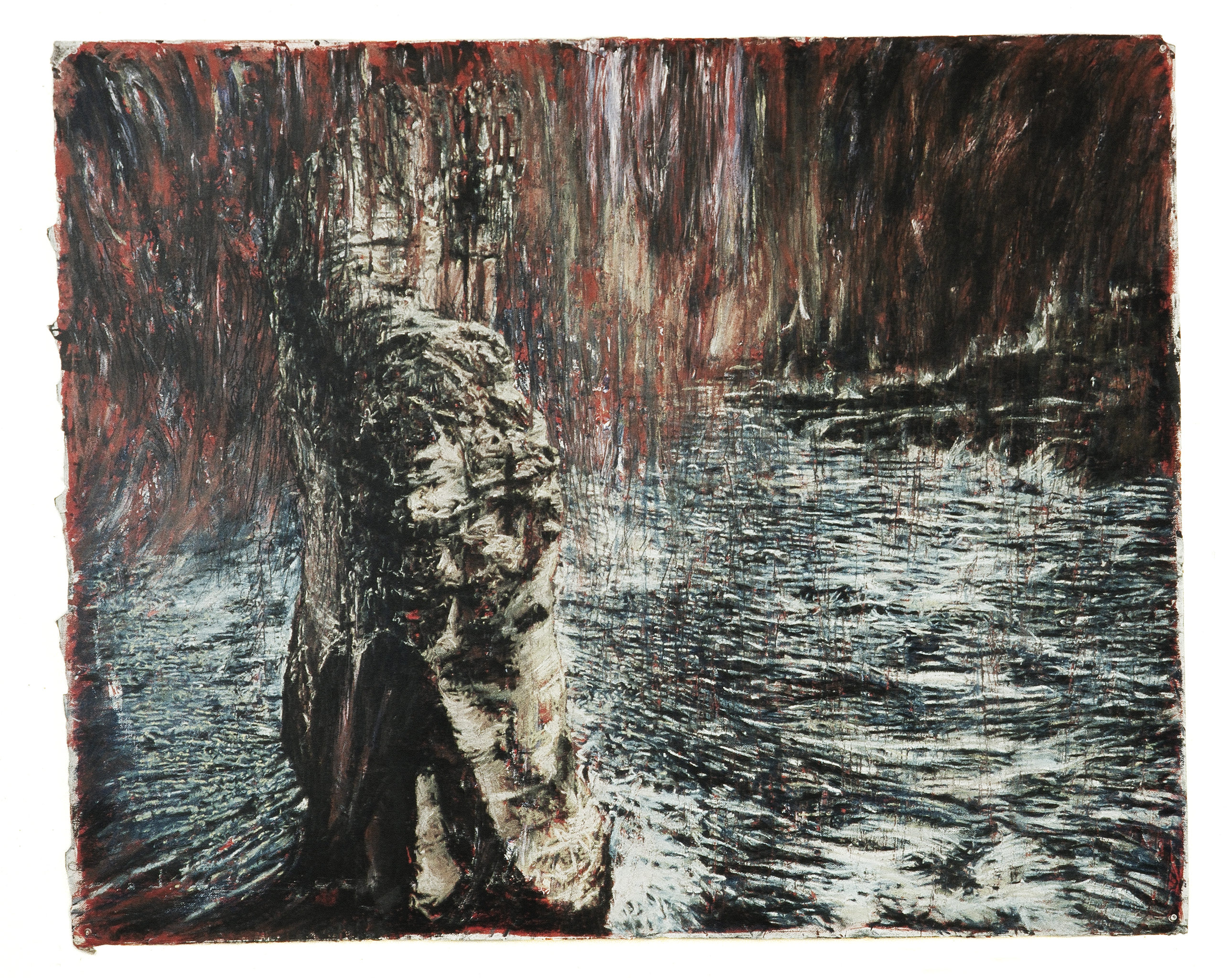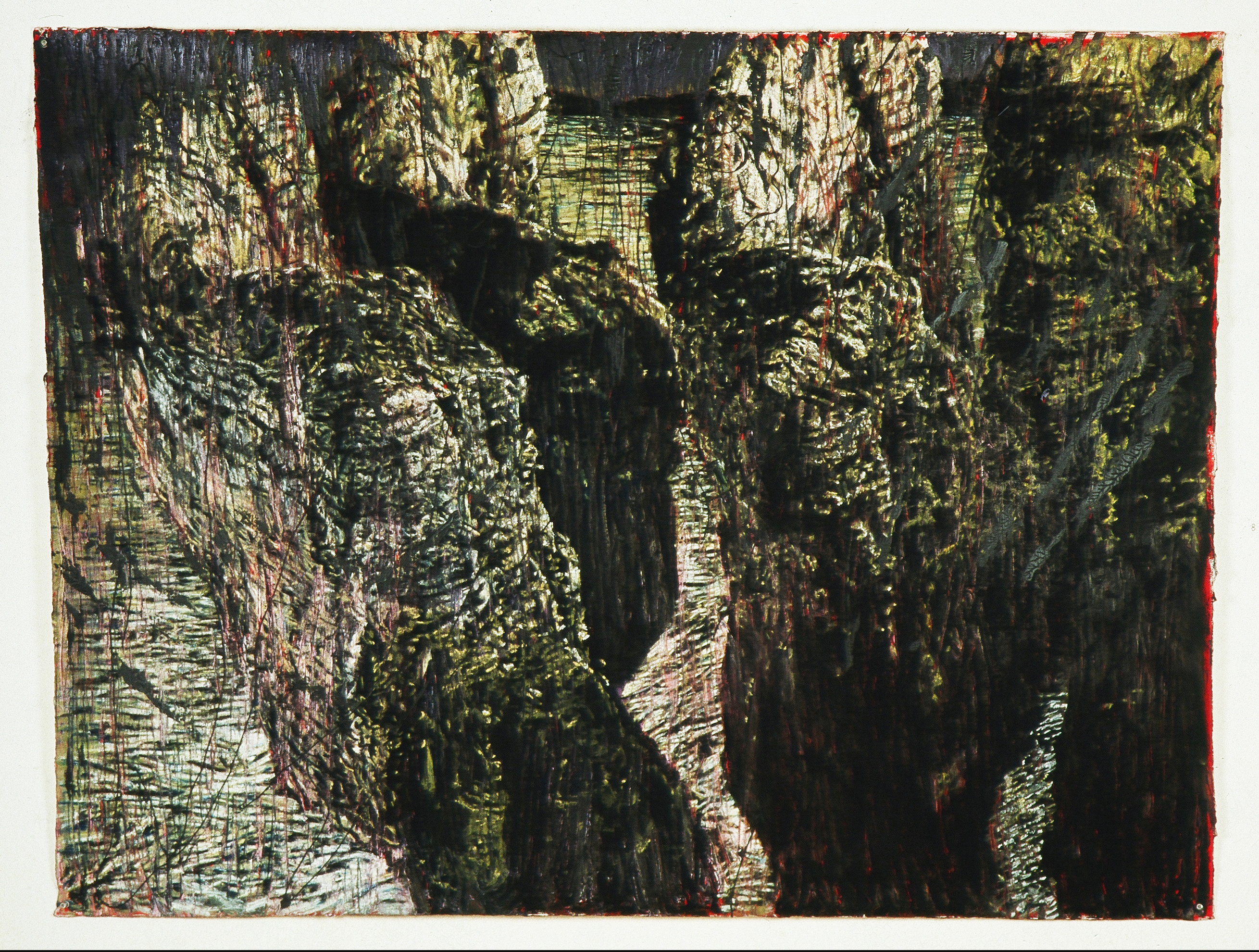Drawings, 1986
Reconnaissance Gallery, Melbourne, Australia






Afterword
Nature as a force that can form and destroy
In the 18th century a way of thinking emerged that gave voice to the type of feelings we have when we encounter the power of nature. The philosophical concept of the Sublime formed as a response to an increased interest in the natural world and our own phenomenological experience of it. Nature as a symbolic force of God’s reckoning was slowly becoming replaced by nature as a strength equivalent to God, it was nature that dwarfed man, it was to nature that we would submit.
In Peter Westwood’s exhibition ‘Untitled’ a series of large scale mixed media drawings of fragmented rock stacks, lashed by sea and rain we encounter what could be described as a contemporary sublime, one imbued with the 18th century’s awe of nature combined with a dystopian near-future sci-fi nightmare world of acid rain and man-made climate. High contrast pales and darks create tonal structures that seem to solidify momentarily in the storm. Flecks of red paint flicker across the surfaces of the works serving to unify each overall image while simultaneously dissolving the illusion of a formal picture plane. Before our eyes the solidity of the rocks dissolve into chalky marks. Similarly, the strands of string and layers of paper embedded in the surfaces of the pictures offer a material strata in direct conversation with the geological strata of the rocky coastal landscapes that we know are shaped through the corrosive power of water.
Nature as a force that can form and destroy
In the 18th century a way of thinking emerged that gave voice to the type of feelings we have when we encounter the power of nature. The philosophical concept of the Sublime formed as a response to an increased interest in the natural world and our own phenomenological experience of it. Nature as a symbolic force of God’s reckoning was slowly becoming replaced by nature as a strength equivalent to God, it was nature that dwarfed man, it was to nature that we would submit.
In Peter Westwood’s exhibition ‘Untitled’ a series of large scale mixed media drawings of fragmented rock stacks, lashed by sea and rain we encounter what could be described as a contemporary sublime, one imbued with the 18th century’s awe of nature combined with a dystopian near-future sci-fi nightmare world of acid rain and man-made climate. High contrast pales and darks create tonal structures that seem to solidify momentarily in the storm. Flecks of red paint flicker across the surfaces of the works serving to unify each overall image while simultaneously dissolving the illusion of a formal picture plane. Before our eyes the solidity of the rocks dissolve into chalky marks. Similarly, the strands of string and layers of paper embedded in the surfaces of the pictures offer a material strata in direct conversation with the geological strata of the rocky coastal landscapes that we know are shaped through the corrosive power of water.
We understand at once that the places in these images are both real and unreal. Westwood’s fierce application of dry pastel literally lashes the surface of the paper creating a layering of material that we recognise in the tips of our fingers as the same crumbly sandstone structures we clamber over when we visit the shoreline. Here we see the stratified cliff faces of pillars we might wade out to at low tide; these are the rocks of shipwrecks and tragedy. As familiar as these natural forms are to us, they also reside in our imaginations as phantasms summoned from the depths of our dreams and collective human memory.
Like all ‘edge’ places, the shoreline is inherently unstable, capable of unexpected change. As such the rock stacks and crumbling peninsulas of Westwood’s drawings become symbols of an uncertain world, a world in perpetual transformation, one in which we necessarily question our role and relationship. The inevitable collapse of fragile ecological structures that cannot be stopped is at odds with the 20th century’s belief in the dynamism of linear progress. In these drawings we experience ecology as cyclic. Storms
In the eye of the storm there is a still point. Tumult surrounds but we are untouched, momentarily. In this space we can draw breath and wait.
Like all ‘edge’ places, the shoreline is inherently unstable, capable of unexpected change. As such the rock stacks and crumbling peninsulas of Westwood’s drawings become symbols of an uncertain world, a world in perpetual transformation, one in which we necessarily question our role and relationship. The inevitable collapse of fragile ecological structures that cannot be stopped is at odds with the 20th century’s belief in the dynamism of linear progress. In these drawings we experience ecology as cyclic. Storms
In the eye of the storm there is a still point. Tumult surrounds but we are untouched, momentarily. In this space we can draw breath and wait.
Julia Powles, artist, curator and writer (2020)
Photographs, Jeff Busby